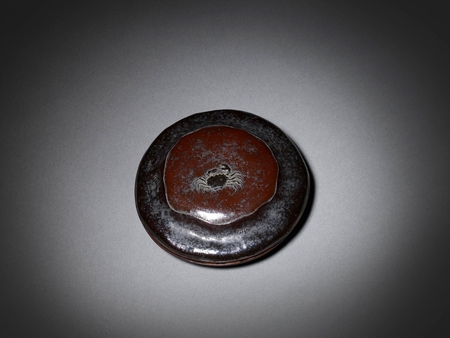Product Description
7135 A kanshitsu (dry lacquer) kōgo (incense box) decorated with a crab
Impressed seal: Hyakkeisai
Japan 19th century Edo period
Dimensions: H. 1¼” x D. 4” (3cm x 10cm)
Box inscribed:
Kanshitsu kani kogo, Hyakkeisai saku (Dry lacquer crab kogo made by Hyakkeisai)
Kōdō (the way of incense) is the Japanese art of appreciating incense and involves the use of various scents taken from exotic woods which are then used within a structure of codified conduct.
This practice includes all aspects of the incense process and the associated kōdōgu (accessories) which include kō (incense), korō (incense burner) and kogo (incense box). These items are indispensible when pursuing activities such as the incense-comparing games kumikō and genjikō which consist of passing a kōro from one participant to another and trying to identify the scent.
Kōdō is considered as one of the three classical Japanese arts of refinement, together with ikebana (flower arrangements) and chadō (the tea ceremony). As in the schools of chadō and ikebana, incense schools are ruled by an Iemoto (principal), a title which is bestowed almost exclusively on a hereditary basis. The oldest kōdō schools were founded in Kyoto during the Muromachi period (1338-1573), when it became a pastime favoured by the ruling Ashikaga shoguns.








